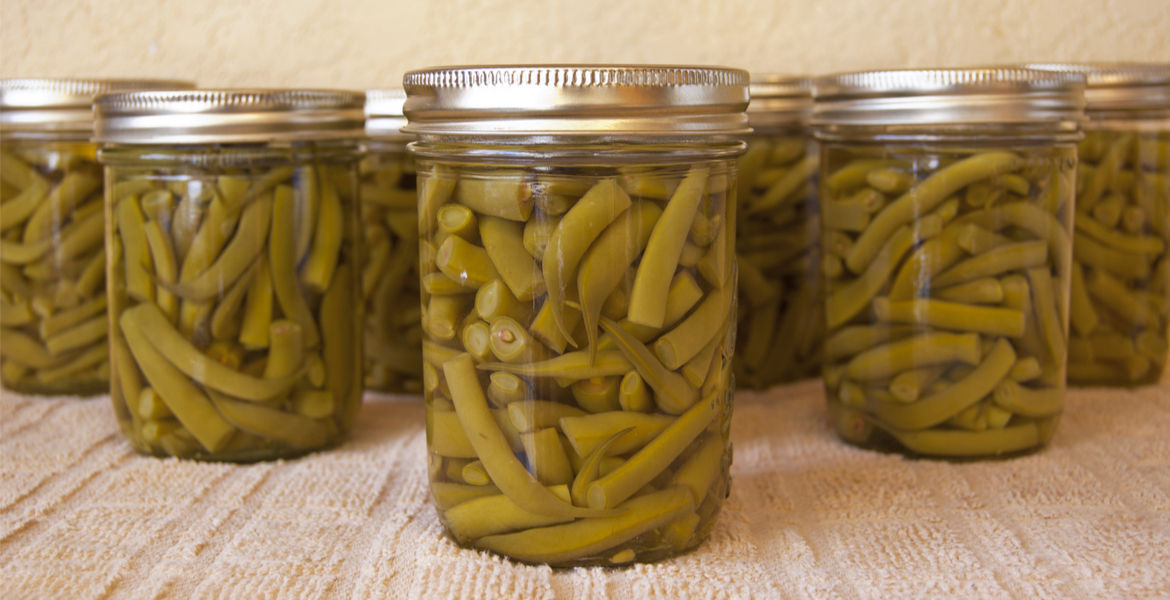
Safety is key when canning food at home
Wednesday, August 19, 2020
Many gardeners across the state are finding themselves with excess fresh fruits and vegetables. Although the family can consume a fair amount of the garden bounty before it spoils, canning that food is a great way to reduce waste and preserve that summer-fresh taste all year long.
Barbara Brown, Oklahoma State University Extension food specialist, said there are several safe methods of canning food at home.
“The key to canning is safety. If done incorrectly, those mistakes can be deadly,” Brown said. “Jars of improperly canned vegetables and meats can contain the deadly botulism toxin without showing signs of spoilage.”
There are three different methods for home canners to use: boiling water bath, atmospheric steam canning and pressure canning. Canning low-acid vegetables, meats, fish and poultry requires the use of a pressure canner. Brown said spores of Clostridium botulinum bacteria, which are found naturally in soil, are heat resistant.
Boiling water and atmospheric steam canners are used for processing naturally acidic or properly acidified foods with natural or equilibrated pH values of 4.6 or below, conditions which do not support the growth of the spores. That means they can be used to can fruits, pickles, and jelly and jam products when a researched recipe is used.
“Even hours in a boiling water bath canner won’t kills the spores from Clostridium botulinum. Left alive after canning, they’ll eventually germinate into actively growing bacterial cells that produce a deadly human toxin when consumed,” she said. “The bacteria like the conditions inside closed jars of low-acid foods sitting at room temperature, so they must be killed during the canning process for safe storage.”
There are two types of pressure canners available, including a dial gauge type and a weighted gauge type. Dial gauge canners use a dial to show the pressure inside the canner and the weighted gauge style has weights on the open vents that let the canner choose 5, 10 or 15 pounds of pressure for processing. The canners work slightly differently so it’s important to use recipes for the type of canner being used.
Brown said it is important to have the dial gauge tested for accuracy before each canning season or after accidentally dropping or banging it. Contact the local OSU Extension office for information regarding dial gauge testing. Weighted gauges do not need testing.
The USDA recommends using a pressure canner/cooker capable of holding at least four quart-size jars, standing upright on a rack inside the canner. The lid must be able to be closed. Smaller cookers and electronic multicookers are not recommended for home canning use. Brown said to make sure all parts of the pressure canner are in good condition, including the rubber gasket, if needed, which should be flexible and soft, not brittle, sticky or cracked. Be sure to check for debris in the openings of any small pipes or vent ports.
“I would recommend that if your pressure canner hasn’t been used this season, or if it’s new, to make sure it’s in proper working order before preparing a canner load of jars,” Brown said.
Those new to pressure canning or simply needing more information can follow procedures outlined at the National Center for Home Food Preservation to ensure food safety. Other canning and food preservation safety information is available through the National Center for Home Food Preservation.
“Using up-to-date canning instructions is vital. Scientific knowledge and equipment have changed since earlier generations were canning foods at home,” she said. “While it’s nostalgic to have your grandmother’s old canning equipment, preserving foods safely is the most important thing.”
MEDIA CONTACT: Trisha Gedon | Agricultural Communications Services | 405-744-3625 | trisha.gedon@okstate.edu
